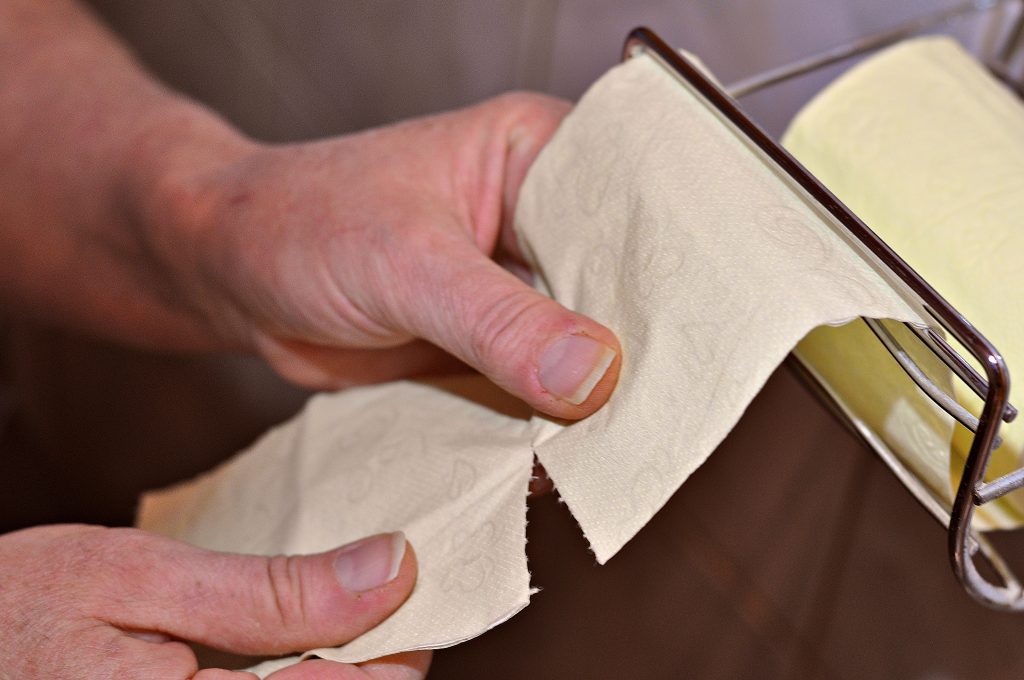During the coronavirus pandemic, water utilities around the world are emphasizing the importance of flushing only the “Three Ps” — pee, poop, and toilet paper. In March, the U.S. Environmental Protection Agency (EPA) amplified the water sector’s plea, urging Americans only to flush toilet paper and dispose of all other items in garbage receptacles.

The message, aimed at discouraging people from flushing woven wipes and other non-dispersible consumer products improperly labeled as “flushable,” is attracting renewed attention to the wastewater sector’s efforts to provide accurate and enforceable criteria for truly flushable products suited to existing water resource recovery facility (WRRF) infrastructure.
“While EPA encourages disinfecting your environment to prevent the spread of COVID-19, never flush disinfecting wipes or other non-flushable items,” the agency said in a release. “These easy steps will keep surfaces disinfected and wastewater management systems working for all Americans.”
The Cost of Mislabeling
Products mislabeled as “flushable” represent a global issue for WRRFs and their personnel. When flushed down toilets, wipes and other sanitary products that do not break down easily in collection systems can lead to blockages, back-ups, and equipment failures.
A 2017 technical document on wipes, authored by the Water Environment Federation (WEF; Alexandria, Virginia), the National Association of Clean Water Agencies (NACWA; Washington, D.C.), and the American Public Works Association (APWA; Kansas City, Missouri), estimates that damages caused by flushing non-dispersible products down toilets amount to as much as $1 billion each year in the U.S.
In 2011 and 2012, a series of field tests in Portland, Maine, found that wipes labeled “flushable” made up only about 6% of total wipes sales by weight in the area. However, this 6% by weight accounted for more than one-third of intact items that WRRF operators had to retrieve manually from facility headworks, according to the 2017 document.
Improperly flushing wipes not only causes costly headaches for WRRF and collections system managers, but also can lead to such problems as household septic system back-ups. Blockage-related plumbing issues are unpleasant and burdensome to manage under any circumstances, but are a particular obstacle during the coronavirus pandemic, said WEF Executive Director Walt Marlowe.
“Being self-quarantined at home can be tough,” Marlowe said in March. “Being self-quarantined with a backed-up sewer is much, much worse. Do not flush things that should not be flushed.”
In Need of Actionable Standards
While no official U.S. laws restrict wipes manufacturers from labeling their products as flushable even if they do not break down in collection systems, the Association of the Nonwoven Fabrics Industry (INDA; Cary, N.C.) published a series of voluntary guidelines for determining whether a product is flushable in 2013. These guidelines are not endorsed by the wastewater sector or thought to be protective of sewer and wastewater treatment systems, according to Claudio Ternieden, Senior Director of Government Affairs at WEF.
In 2015, the U.S. Federal Trade Commission (FTC) issued the first high-profile action against the flushable label in a consent order against Nice-Pak Products Inc. The ruling required the company to substantiate claims that its wipe products break apart shortly after being flushed in order to continue labeling its wipes as such. The company agreed to stop indicating its products were flushable without proper substantiation.
The water sector continues to advocate for enforceable and effective flushability standards, including attempts to negotiate more protective guidelines with INDA. In 2016, a coalition of international water sector organizations released a position statement calling for all wipes and personal care products currently on the market to be clearly labeled as “unflushable”. It also suggested a basis for future wipes legislation: When flushed, the product must break into small pieces quickly; must not be buoyant; and only contain materials which will readily degrade in a range of natural environments. The position statement has been signed by more than 300 water-sector organizations from more than 25 countries.
In 2017, WEF and NACWA filed an amicus brief in support of a District of Columbia law to regulate disposable wipes; the measure, despite unanimous approval from the D.C. Council, was blocked by a federal judge in 2018.
Personal Choices
In the meantime, individuals should refrain from flushing anything other than the 3 Ps. Anything else “can damage internal plumbing, local sewer systems and septic systems,” the EPA press release states. “Fixing these backups is costly and takes time and resources away from ensuring that wastewater management systems are otherwise working properly. … Our nation’s wastewater employees are everyday heroes who are on the frontline of protecting human health and the environment every single day.”
“We can each make the simple choice to avoid flushing things that should not be flushed and help take a little burden off the people who operate and maintain our WRRFs,” said Ternieden.
— Justin Jacques, WEF Highlights








May 15, 2020
Laws & Regs